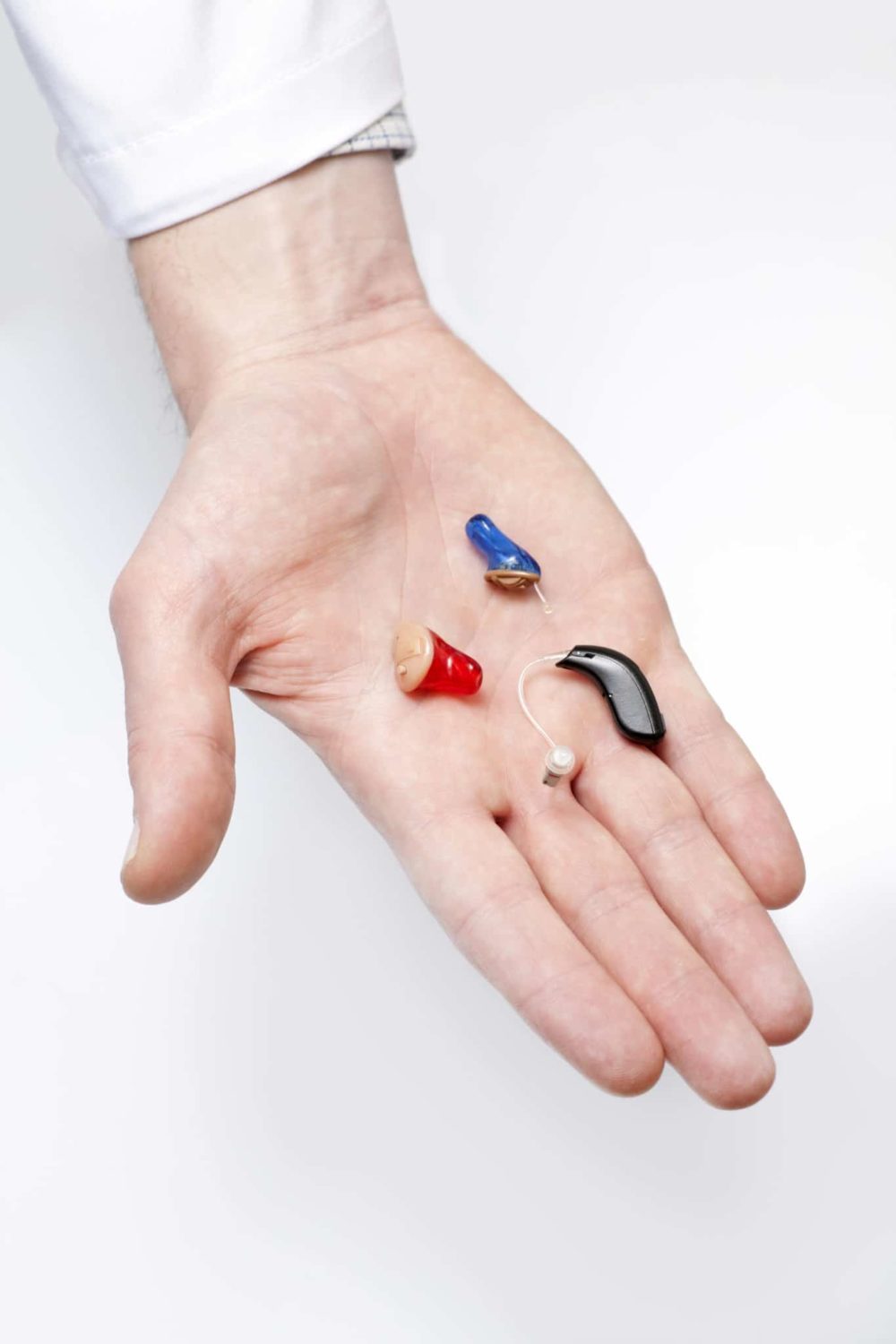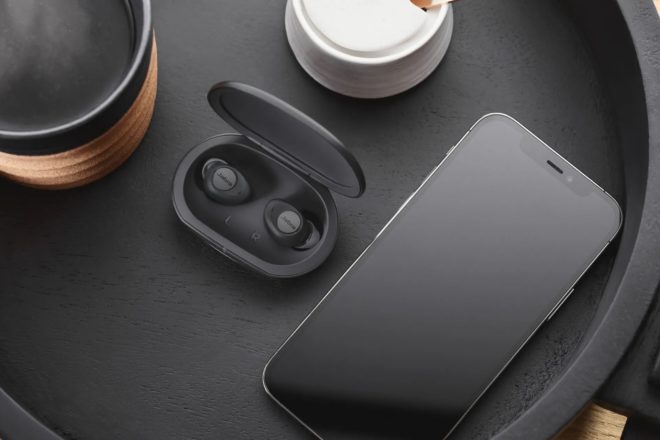Which Style is Right for You?
We’re proud to partner with the top hearing aids brands to bring you advanced solutions with the latest technology. That said, there are lots of different shapes and styles of hearing aids on the market, and it can be hard to know which one might be the best fit for you.
Choosing your hearing aid is not just about what the device looks like.
Choosing your hearing aid is not just about what the device looks like. Our experienced Audiologists start by evaluating your unique hearing needs and learning more about what kind of lifestyle you lead. Do you mostly stay home, or are you out and about? We know that one size doesn’t always fit all, and it’s important to consider lots of factors when choosing a hearing aid, such as the type of hearing loss, your activity level, and your technology needs.
While we have some basic information about hearing aid styles on our hearing aids page, we wanted to go into more specific detail about the benefits and considerations of some common hearing aid styles.
Receiver In The Canal (RIC): 83% of our patients choose this style
RICs are very popular, and it’s no wonder. They are known for being comfortable to wear and offer an appealing blend of characteristics: they work well for people with a wide range of hearing needs, they are discreet, and they have a robust set of technology features.
Patient Needs: RICs can be programmed to produce enough amplification to accommodate mild to moderate hearing losses with the “Open Fit” earpiece or to accommodate more severe hearing losses with a custom earpiece.
Style/Appearance: As the smallest type of hearing aid that goes behind the ear, RICs have a small case that sits on top of the ear with a thin receiver wire that fits down in the ear canal. While it’s more visible than some other models, this style is still very discreet, since the case is small and the thin, clear wire that extends down into the ear is often almost invisible. Manufacturers generally offer a range of colors to help the hearing aid blend seamlessly with the patient’s skin or hair.
Comfort: Patients consistently tell us that this is the most comfortable hearing aid style to wear. The “open fit” style allows for flexibility with jaw movement and lets sound waves travel through the ear canal naturally, unlike other styles that go inside the ear canal and create a “stopped up” feeling. Because the small case fits over the ear, it’s not always as comfortable for patients with glasses. However, adjustments can be made to accommodate.
Battery/Rechargeability: Most RICs have a rechargeable option, eliminating the need to change batteries.
Durability: In most cases, RICs do not need repair as frequently as other devices. If these hearing aids ever stop working, your provider can likely repair them quickly in the office. Because they sit down in the ear canal, the receivers on this style can require frequent cleaning, but it’s fairly easy.
Technology Considerations: RICs put the user squarely in control of their hearing experience. Many RIC models are available with all of the top hearing aid technology and features, such as windscreen, speech recognition, and directional microphones. Most manufacturers offer streaming media and smartphone connectivity and control through an app on the patient’s smartphone.
Completely In The Canal (CIC)/Invisible In The Canal (IIC): 3% of our patients choose this style
Patients often come to us thinking they want hearing aids in the CIC or IIC style because they are so small, but many change their minds when they learn about the durability and comfort issues of CIC/IICs, as well as limited technology features offered in these styles.
Patient Needs: CIC/IICs can be programmed for patients with mild to moderate hearing losses. Because of their small size, these are not a good option for people with small ear canals or dexterity issues.
Style/Looks: The biggest advantage of CIC/IICs is that they are the smallest, least visible hearing aids on the market. Each device requires a professional to make a custom mold of the patient’s ear canal.
Comfort: CIC/IICs are custom fit to sit deep in the ear canal and are removed by tugging on a small plastic string. Because the device fills your entire ear canal, an “occlusion effect” is common: patients typically feel “plugged up” and like they are talking in a barrel, especially patients with mild hearing loss or normal hearing in the low frequencies.
Battery/Rechargeability: Most CIC/IICs uses maller button batteries that require frequent changing.
Durability: Because CIC/IICs sit down in the ear canal where they are exposed to ear wax and moisture, they require daily cleaning and frequently need repairs. And because ears never stop growing, most hearing aids of this style must be remade after a few years to ensure a proper fit in the ear canal.
Technology Considerations: The small size of these devices limits the amplification power and technology options. Most models don’t offer the latest technology features such as streaming, smartphone connectivity, or directional microphones that help to create a seamless listening experience.
In The Canal (ITC)/In The Ear (ITE): 4-6% of our patients choose this style
If a patient doesn’t want an over-the-ear style but needs more features and reliability than a CIC/ICC model can provide, an ITC/ITE hearing aid might be a good fit. ITC/ITEs are also a good option for people who have dexterity issues that prevent them from using the smallest devices.
Patient Needs: ITC/ITEs can produce enough amplification to accommodate most mild to severe hearing losses.
Style/Appearance: While they’re not as discreet as smaller styles, ITC/ITE hearing aids are less visible than BTEs – all the components of the hearing aid are contained inside the patient’s ear. ITEs are slightly more visible than ITCs. Each device requires a professional to make a custom mold of the patient’s ear canal.
Comfort: ITC/ITEs are custom fit to sit snugly in the bowl of the ear and down into the ear canal. Because these devices block the ear canal, an “occlusion effect” is common: patients typically feel “plugged up” and like they are talking in a barrel, especially patients with mild hearing loss or normal hearing in the low frequencies.
Battery/Rechargeability: Some manufacturers offer a rechargeable option in these styles, eliminating the need to replace batteries frequently. If you don’t go with a rechargeable model, make sure you pay attention to battery size: for non-rechargeable devices, know that smaller batteries will need to be changed more frequently. Some ITE models use larger batteries that do not require changing as often.
Durability: Because ITC/ITEs sit down in the ear where they are exposed to ear wax and moisture,frequent cleaning is required, and they often need repairs. And because ears never stop growing, most hearing aids of this style must be remade after a few years to ensure proper fit in the ear canal.
Technology Considerations: The profile of these devices may cause the microphones to pick up more wind noise than other styles. These styles are able to offer more technology features than smaller models. Many manufacturers offer manual volume control and program button options, and some have smartphone connectivity and streaming.
Behind The Ear (BTE): 4% of our patients choose this style
As the largest and most visible of all hearing aid options, BTE styles aren’t particularly chic, but they offer great performance in a sturdy package. If you need lots of technology features and high durability, this style might be a good choice for you.
Patient Needs: BTEs can produce powerful amplification to accommodate even severe hearing losses. And the larger size of these devices makes them a good option for people with severe dexterity issues.
Style/Appearance: With BTEs, all hearing aid components sit in a sturdy case behind the ear. A tube connects to a custom earmold that sits inside the ear canal. Manufacturers generally offer a range of colors to help the hearing aid blend seamlessly with the patient’s skin or hair. They also offer fun colors that are sometimes preferred by our pediatric or “young at heart” patients.
Comfort: Patients generally find BTEs to be very comfortable. The size and placement of the ear case may cause problems for those who wear protective equipment (safety goggles, helmets, etc.) or frequently wear hats or glasses.
Power: Most manufacturers offer a rechargeable option in this style, eliminating the need to frequently replace batteries. If you do choose a BTE model that uses batteries, the batteries are generally larger and don’t require changing as frequently.
Durability: The biggest benefit to BTEs is their high durability. This style reduces the risk of damage from earwax or moisture buildup, and they are easier for the wearer or caregiver to clean and maintain. One consideration–because ears never stop growing, most hearing aids of this style must be remade after a few years to ensure a proper fit in the ear canal.
Technology Considerations: BTEs give the user lots of features and control. Most models can accommodate manual volume control and program button options if needed and many offer streaming media and smartphone connectivity.
We’re Here to Help
This is a lot of information to process, but you don’t have to do it alone. Our hearing specialists are here to listen to your concerns and present all your options, so that you can choose the right devices and improve your hearing and your life. Don’t hesitate to call us with questions or schedule an appointment today to get started.



